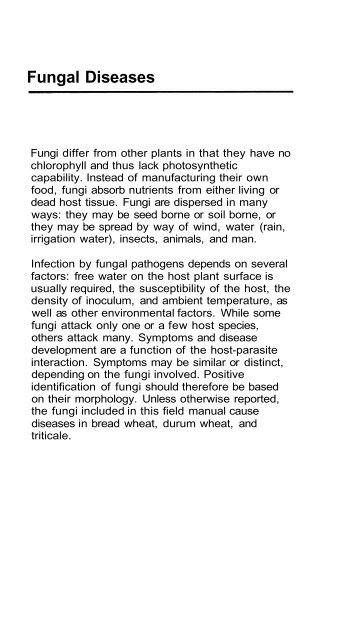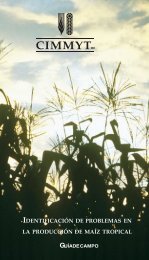Wheat Diseases and Pests - Wheat Doctor - CIMMYT
Wheat Diseases and Pests - Wheat Doctor - CIMMYT
Wheat Diseases and Pests - Wheat Doctor - CIMMYT
Create successful ePaper yourself
Turn your PDF publications into a flip-book with our unique Google optimized e-Paper software.
Fungal <strong>Diseases</strong><br />
Fungi differ from other plants in that they have no<br />
chlorophyll <strong>and</strong> thus lack photosynthetic<br />
capability. Instead of manufacturing their own<br />
food, fungi absorb nutrients from either living or<br />
dead host tissue. Fungi are dispersed in many<br />
ways: they may be seed borne or soil borne, or<br />
they may be spread by way of wind, water (rain,<br />
irrigation water), insects, animals, <strong>and</strong> man.<br />
Infection by fungal pathogens depends on several<br />
factors: free water on the host plant surface is<br />
usually required, the susceptibility of the host, the<br />
density of inoculum, <strong>and</strong> ambient temperature, as<br />
well as other environmental factors. While some<br />
fungi attack only one or a few host species,<br />
others attack many. Symptoms <strong>and</strong> disease<br />
development are a function of the host-parasite<br />
interaction. Symptoms may be similar or distinct,<br />
depending on the fungi involved. Positive<br />
identification of fungi should therefore be based<br />
on their morphology. Unless otherwise reported,<br />
the fungi included in this field manual cause<br />
diseases in bread wheat, durum wheat, <strong>and</strong><br />
triticale.



